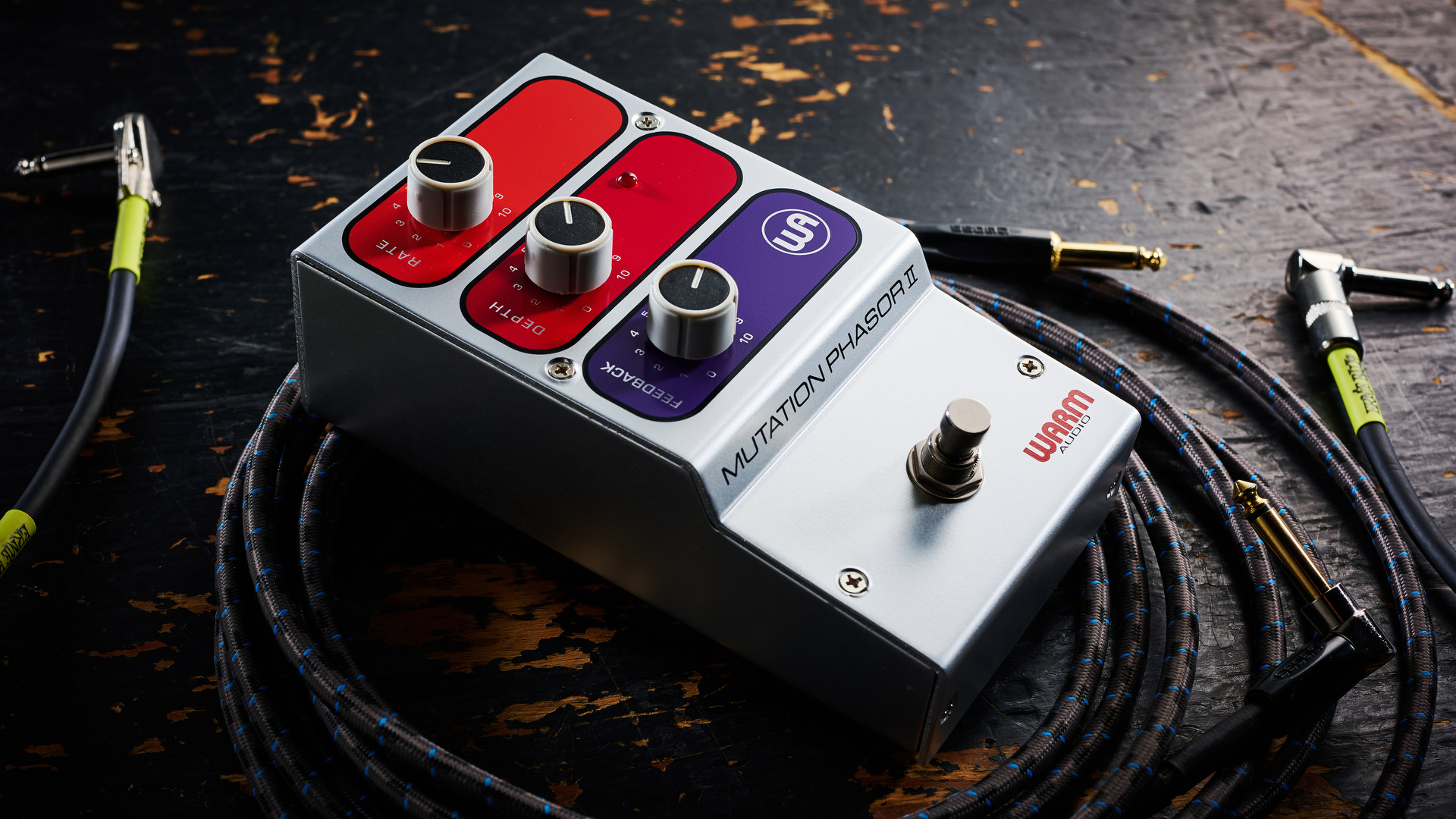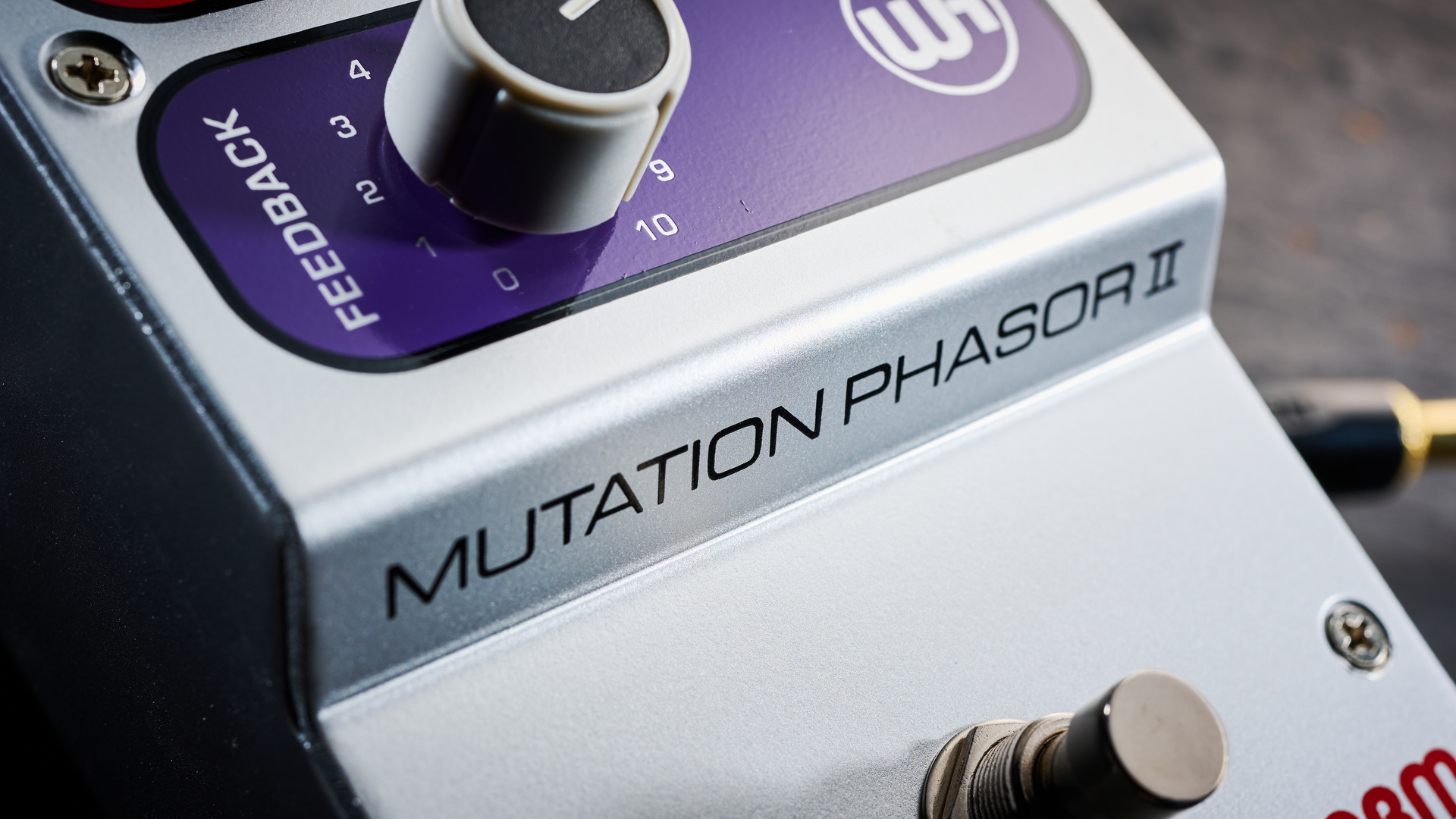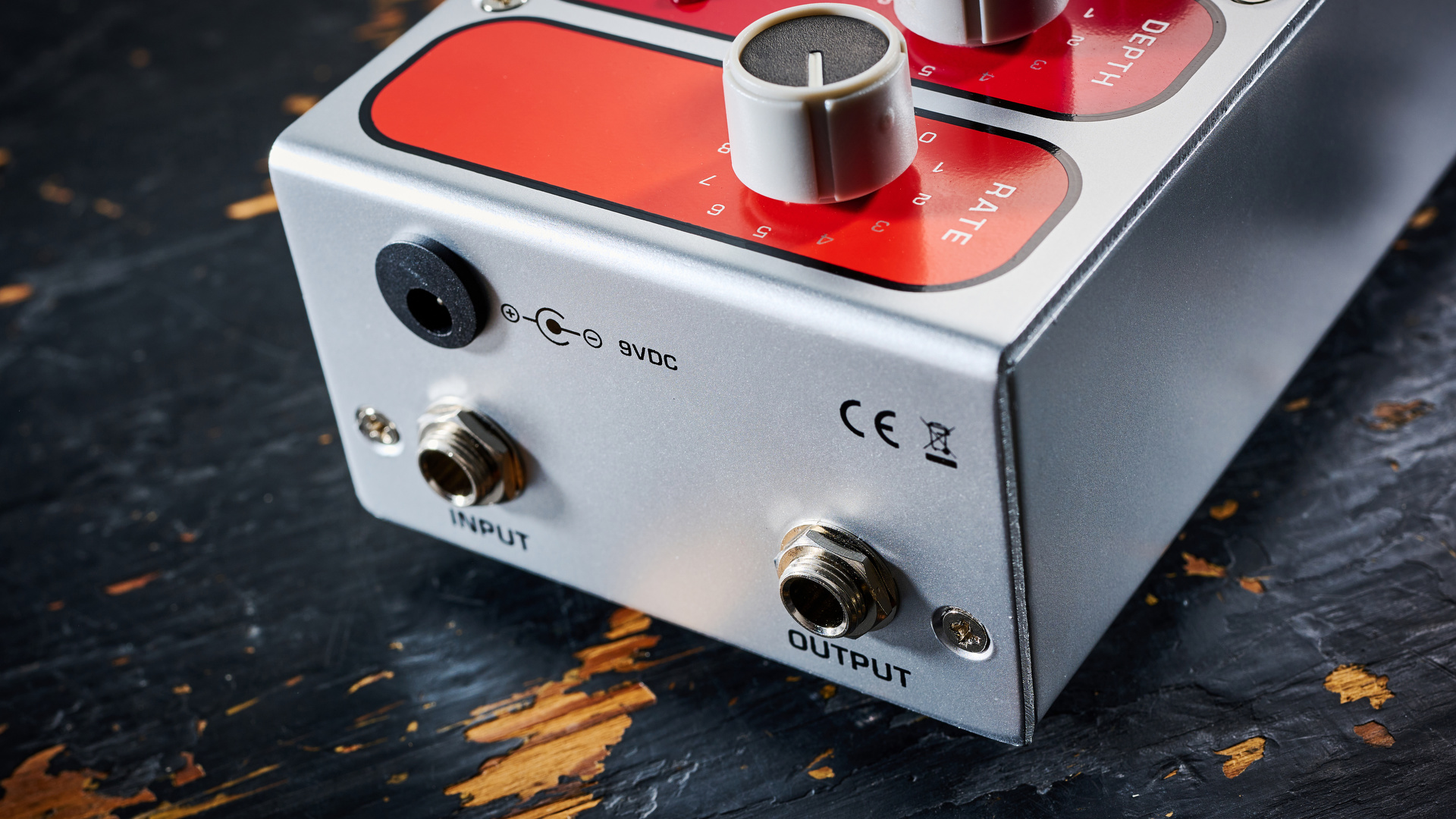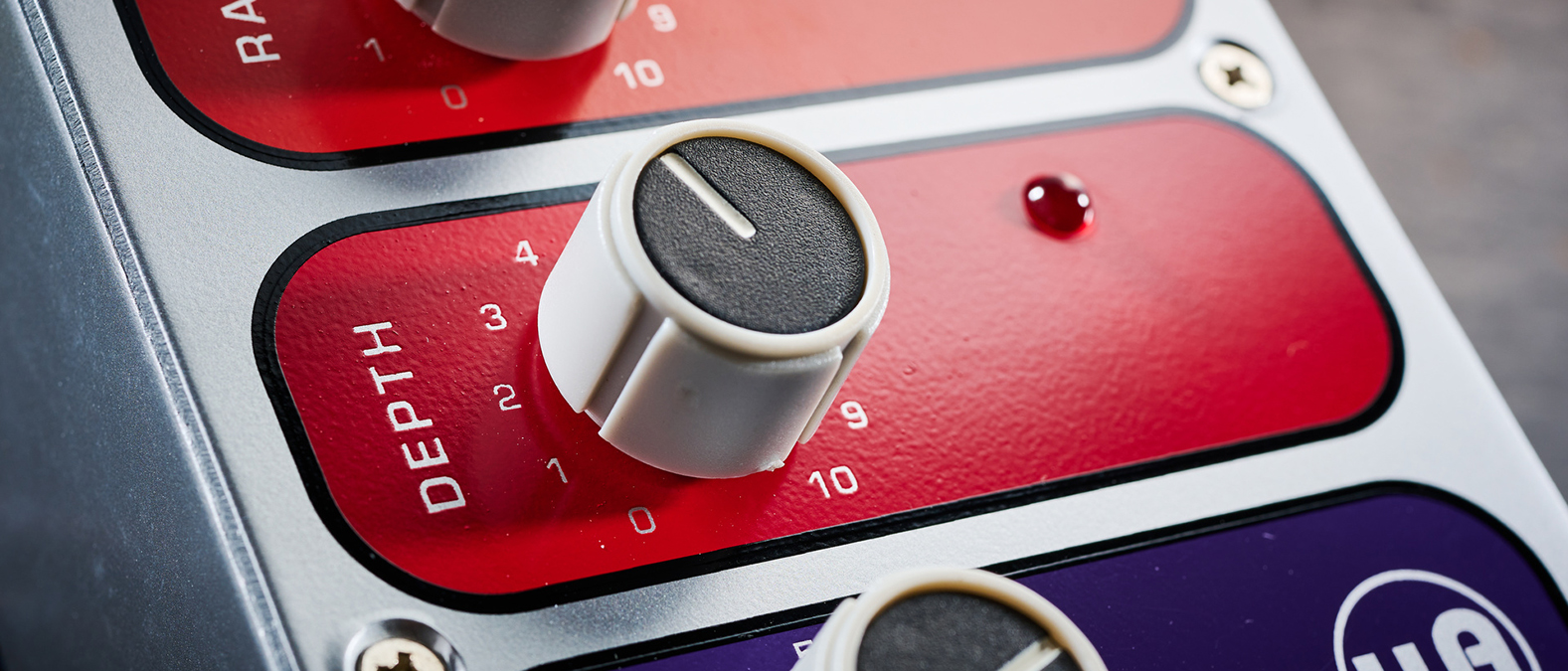MusicRadar Verdict
The Warm Audio Mutation Phasor ll has ‘that sound’, combined with the mojo and decadent footprint of the original
Pros
- +
Great classic phaser sounds
- +
Vintage looks
- +
Affordable
Cons
- -
Mu-Tron currently makes the Phasor III
- -
Size
MusicRadar's got your back
Warm Audio Mutation Phasor ll: What is it?
There are three main designs for phaser pedals. The EHX Small Stone is OTA-based, and the MXR Phase 45 and Phase 90 are FET-based.
Mu-Tron phaser pedals, on the other hand, are optical. It’s that, combined with the addition of a feedback control, that gives them their unique timbre.
The original Mu-Tron Phasor II was one of the first phaser pedals, released in 1976 before the MXR and EHX, and now eye-wateringly expensive.
With the originals sporting a non-standard power supply, as well as the standard quirks of vintage pedals, it’s easy to see why many builders have attempted to recreate it.
Warm Audio has made its name on studio-grade replications of classic rack equipment, and this is one of their first forays into pedals. The price is competitive, but is it up to their usual high standard?
Most modulation effects work by juxtaposing a signal against an altered, or wet, copy of itself, and phase is no different. In the case of flange, it’s a delayed copy, with the delay altered by an LFO.
In the case of phase, it’s a filter, also modulated with an LFO. Re-combining this with the original signal results in different overtones being in or out of phase. In the context of phasing, each filter is referred to as a ‘stage’, and they’re cascaded for effect. The original Mu-Tron Phasor II was a six-stage phaser, for instance.
Want all the hottest music and gear news, reviews, deals, features and more, direct to your inbox? Sign up here.

Warm Audio Mutation Phasor ll: Performance and verdict
Just like on the original, there are three controls on the Warm Audio Phasor II. The first, rate, ranges from 1/10th of a second to 18 sweeps per second. With the depth control up, this means that not only phase effects but Uni-Vibe effects can be had, since the Uni-Vibe was also an optical unit.
The depth pot varies the frequency range of the effect. When wide open, it’s an incredibly dynamic, even aggressive, phaser. Adding feedback, via the feedback knob, is like throwing fuel on the fire. Still, it’s often best to start with it maxed out, then pull it back until it sits right.
Using bridge pickups, it’s necessary to lower the depth control, as the extremes of the filter sweep can get a bit out of hand. In the studio, where you have post-EQ, it’s incredibly satisfying to leave it dimed, and let the velcro-ripping jet whoosh of the Phasor rip by. On a neck pickup, especially a darker humbucker, the effect is less extreme and more lush.

Naturally, putting a distortion or overdrive pedal in front dramatically increases the impact of the pedal. Any gain stage increases the amount of harmonic content the filters have to chew on, and the more saturated the input, the more rewarding it can be.
However, it’s not for everybody, the extreme sounds that result from running a maxed-out fuzz pedal into the Mutation Phasor are ace. It’s probably not a sound that would get used longer than a single riff or breakdown, but it’s undeniably attention-grabbing.
At the most savage setting available, with fuzz in front, and depth and feedback at maximum, it nails the solo tone from The Mooney Suzuki’s garage rock anthem Alive and Amplified, or some of the extreme fuzz-into-phase sounds from Smashing Pumpkins’ Siamese Dream. With the dial backed off a fraction, and the depth wound down, you can chill in Tame Impala territory.

It’s hard to overstate how addictive the optical phaser sound is if it resonates with you as a player. You can lose hours just noodling. The difficult part has always been that it’s not a subtle effect and that working it into a song can be a pretty tricky business. In some genres, you’re unlikely to ever need a phaser, but even so, the Phasor II just might be enough fun to justify your interest anyway.
On its own merits, plus the perspective of pure price, the Phasor II is close to unbeatable. Its feature set is stripped-back, yes, but that’s true of the original. The issue is that in practicality as well as expansion terms, it is beaten by the Mu-Tron Phasor III. The Phasor III is not only a Mu-Tron original, but can also be chained to form a replica of the Bi-Phase, or even Tri-Phase - should you have the budget and the inclination to do so.
MusicRadar Verdict: The Warm Audio Mutation Phasor ll has ‘that sound’, combined with the mojo and decadent footprint of the original.
Warm Audio Mutation Phasor ll: Hands-on demos
Warm Audio
Travis Raab Guitars
Kris Barocsi
Midlife Synthesist
Warm Audio Mutation Phasor ll: Specifications

- Controls: Rate, Depth, Feedback
- Sockets: Input, Output, Power
- Power: 9V DC Centre-negative or 9V Battery
- CONTACT: Warm Audio
Alex Lynham is a gear obsessive who's been collecting and building modern and vintage equipment since he got his first Saturday job. Besides reviewing countless pedals for Total Guitar, he's written guides on how to build your first pedal, how to build a tube amp from a kit, and briefly went viral when he released a glitch delay pedal, the Atom Smasher.

